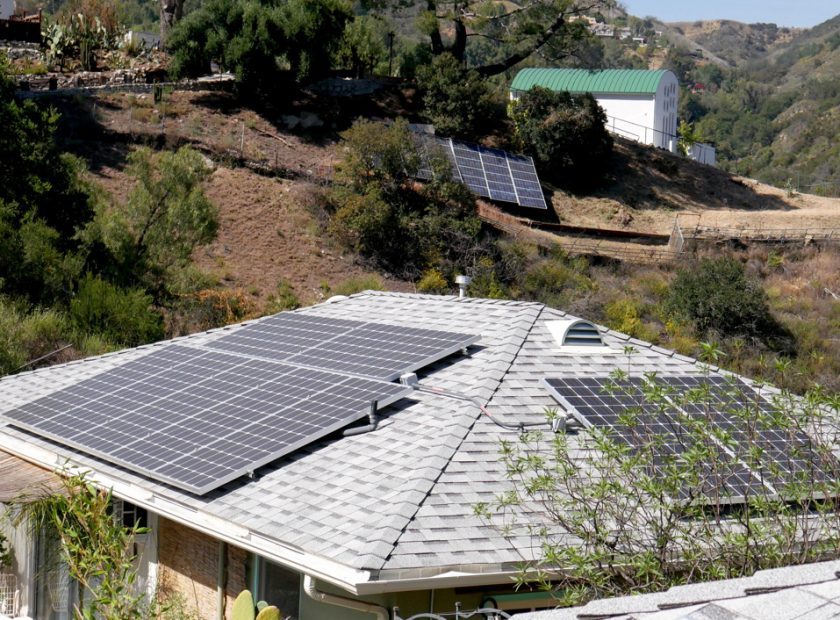Can different solar panels be mixed?

When it comes to self-consumption installation, there may be many questions about the solar panels associated with the size of the panels. As well as the best place in the house to place them and the number of panels that should be interconnected to produce more energy. Also, whether or not it is possible to mix them.
Combining solar panels: yes or no?
While you are wondering whether it is possible to mix different solar panels, you should also ask yourself what type of panels you want to mix. In a self-consumption installation, it is possible to install hybrid panels. These are a mixture that allows to obtain electricity, but also heat for the home.
But if you want to know if it is possible to place old and new panels, of different powers, different manufacturers or second hand with new panels, then it is necessary to pay attention to certain technical requirements.
To begin with, not all solar panels are the same. Manufacturers make them in different sizes, powers, measures, characteristics, etc.. These are data that you have to keep in mind before deciding to combine photovoltaic panels. You should also consider the type of silicon with which the solar cells or cells are formed: polycrystalline, monocrystalline or amorphous.
You may be interested in: Solar providers near me Macon, Georgia.
Remember that all photovoltaic cells of all solar panels are made of silicon. This element has the ability to transform sunlight into electrical energy thanks to a boron coating on the cells. The captured light is transformed into direct current and, with the help of inverters, into alternating current.
In addition to these conditions, users should pay attention to the power of the panels, i.e. their voltage. It is common to find panels of 36, 60 or 72 cells. These will have different voltages: 12V, 24V and 48V.
How to mix photovoltaic panels?
It is important to take into account all the conditions described above, since it depends on them that the installation is adequate and that the necessary energy is produced. Also, that there are no deficiencies and damages in it. In order to combine solar panels, it should not be done in parallel with panels or series that have different voltages. The panels that are placed in parallel must have a similar voltage and have the same type and number of cells. You can combine a panel of one brand with another, or an old panel with a new one, but only if they have the same voltage and the same number of cells.
You may be interested in: Solar providers near me Macon, Georgia.
If this condition is not met, it does not mean that you cannot use your old panels, but that you cannot combine them in groups of the same circuit.
Panels of different power
When it comes to panels of different power, you should know that it is possible to combine them, but only if a series of conditions are met. As we have already mentioned, the panels can come in voltages of 12, 24 and 48 volts, as well as different power ratings in watts (W); these can be 300, 320, 340, etcetera.
In line with the previous section, combinable panels have to meet one of these two requirements:
Not to be combined in parallel. Different voltages cannot be mixed in the series. All panels placed in the series must be of 12, 24 or 48 volts.
The panels used to complete a series or string must be the same.
When in a 12V installation the power is higher (even if the panels are also 12V), it is not necessary to modify the whole installation. It is enough to place a regulator that controls the power and the appropriate intensity. The same applies when the panels are 24V: a charge regulator will be enough to mix the different solar panels.
What happens when you have a 12V installation but you want to add 24V panels? In these cases, and if you want to save on extra costs, you should add an MTTP regulator. This type of device allows to achieve a better photovoltaic performance while combining different voltages. This device allows to regulate the output of a circuit to the batteries with a voltage of 12V.
Contrary to the above, if solar panels of lower voltage (12V) are purchased, in order to place them in a higher voltage installation (48V), an MTTP regulator must also be installed to regulate the voltage output to 24V.
You may be interested in: Solar providers near me Macon, Georgia.
In case you want to replace 12V installations with 24V, for example, but you want to continue using your old panels, you will have to use the MTTP regulator again, which will regulate the output to 24V instead of 12V. The same applies to 48V voltages.
When the connection is made in parallel, it is very important that you install a fuse of approximately higher current. This avoids current peaks that could cause diode burnout.





